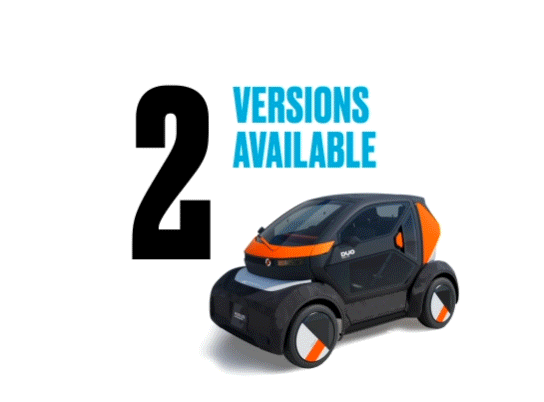Consumption Week 8
My notes from some of the media I consumed this week.
Contents
Energy, Climate, and the Future
MIT team makes a case for direct carbon capture from seawater, not air
https://newatlas.com/environment/mit-carbon-capture-seawater/
- The ocean currently soaks up some 30-40% of all humanity’s annual carbon emissions, and maintains a constant free exchange with the air. Suck the carbon out of the seawater, and it’ll suck more out of the air to re-balance the concentrations. Best of all, the concentration of carbon dioxide in seawater is more than 100 times greater than in air.
- “Though our base energy consumption of 122 kJ/mol-CO2 is a record-low,” reads the study, “it may still be substantially decreased towards the thermodynamic limit of 32 kJ/mol-CO2.”
- The team projects an optimized cost around US$56 per ton of CO2 captured.
UK fights energy crisis with ‘world’s first’ shared rooftop panels
https://interestingengineering.com/innovation/uk-energy-crisis-shared-rooftop-panels
- Residents of Cardiff’s Odet Court housing complex U.K. are benefiting from “world-first” technology that allows solar energy from a single rooftop system to be shared by multiple residences in the same building.
- The new solar system setup can supply up to 75 percent of each apartment’s power requirements, benefiting the residents, Euronews reported on Saturday.
Wind-Powered Cargo Ships Are the Future: Debunking 4 Myths That Stand in the Way of Cutting Emissions
- Myth 1: Wind ships are a thing of the past, for good reason
- Myth 2: The wind is unreliable, so ships won’t arrive on time
- Myth 3: Sails cannot work on all types of ships
- Myth 4: If it makes so much sense, we’d already be doing it
This startup uses grass to build energy-efficient building panels
https://interestingengineering.com/innovation/startup-engineered-building-materials-grass
- Plantd is building panels for roof decking, wall sheathing, and subflooring. They claim that their product outcompetes wood in every aspect: it’s lighter, cheaper, and captures more carbon.
- This rapid-growth plant can reach lengths of 20 - 30 feet in just one year, making it an ideal choice for building materials.
Mobilize Duo, an electric car to rent
https://www.mobilize.com/en/wearemobilizers/mobilize-duo-joy-on-wheels/
- Only 80kph and 140km range, but I still want one.
Personal Development, Health, and Fitness
[The Art of Manliness] Throw a 2-Hour Cocktail Party That Can Change Your Life
- Timings
- Frequency: 1 per 2 months (allows 3 weeks to prep)
- Day: Monday, Tuesday, or Wednesdays (less competitive)
- Duration: 2 hour hard time limit, ideally 7-9PM
- Reduces late arrivals or late-nights
- Enables ending on a high
- How to: “It’s almost 9, we’ll be closing up soon, time for final drinks!” → “It’s 9 now, thanks for coming, I’ve met many interesting people, feel free to head off now” and start to tidy
- Who: 5+ core friends + ~10 weak ties (15~20 in total is best)
- Invite more as some will turn you down
- Invite couples to first events to get numbers up
- Later invite “important” people e.g. clients, senior colleagues
- Give multiple dates if possible
- Invitations
- Have RSVP page (not Facebook) to make more “official” and encourage commitment
- Core group (friends): “If I did this, would you come?” -> get 5 yeses
- Others: “I’m hosting a cocktail party, can I send you the info?” i.e. don’t invite directly - if they say yes, send RSVP page
- Reminders: 1 week, 3 days, morning of
- Share guest bios or interesting info
- Actions
- Use name tags
- Minimise chairs/sitting
- Provide drinks
- Take group photo at 2030sh
- Icebreakers
- Every ~30mins: 1910, 1940, 2010
- Get everyone to stand in a circle
- “So we can meet new people”
- Breaks up existing conversations
- Share personal info to make future conversations easier
- First one low pressure: “what is one of your favourite breakfast foods?”
- Last one add value (give a 5 minute warning, “question will be XXX”: “what is the best TV/film/podcast you’ve watched in the last week?” “what is the best purchase under £100 in the last month?” “what is your favourite London city hack?”
- “Thanks, it was great to meet you, I’m going to mingle and meet some other people.”
[Huberman Lab] How Meditation Works & Science-Based Effective Meditations | Episode 96
- Awareness continuum: interoception (inside: feeling heart beating, thoughts, etc) vs exteroception (outside: sounds, movement, etc)
- Notice which way you’re biased in the moment and do an opposite meditation, even if only 3 minutes, to train (focus on third eye centre or tree in distance)
- Types: focus vs relax (NSDR); internal vs external; active vs passive breathing
- Examples
- Interoception: focus on third-eye centre (TEC)
- Location of prefrontal cortex - as the brain has no sensing mechanisms, focussing on this doesn’t arouse sensations, allowing thoughts/feelings to arise
- Exteroception: watch a tree in the distance
- Interoception: focus on third-eye centre (TEC)
- A wondering mind is an unhappy mind - the more focussed you are on the task at hand the happier you’ll be
- Breathing
- Cyclic hyperventilation / Wim Hof breathing / tummo is not meditation but it’s own practise
- Normal breathing: active inhale and passive exhale
- An active exhale encourages interoception
- Longer/more vigorous inhales = alert; exhales = relaxed
- Any form of active breathing requires focus so is a type of meditation. More complex breathing patterns are more consuming so “more” meditative.
- Space-time bridging (STB) meditation
- Attention on breathing/TEC for 3 breathes
- 50:50 visual focus on hand held out in front and 3 breathes
- 50:50 visual focus on something 15m away and 3 breathes
- 50:50 visual focus on something very far away and 3 breathes
- Close eyes, focus on how small you are in the universe for 3 breathes
- Repeat
[Modern Wisdom] #592 - Richard Shotton - 8 Fascinating Psychological Biases
Activity: Try delabelling/blind taste testing wine etc
- Habit formation - align with natural event e.g. new year, start of week, birthday
- Random/variable rewards builds addiction because people are bad at statistics
- Reduce friction - e.g. default to donate organs, one-click buy
- Add friction - display of effort e.g. Skyscanner
- Add friction - e.g. IKEA effect (you build so you value), c_t is more memorable than cat (your brain has to put in more effort)
- Irregular numbers are more believable - e.g. £10,423 vs £10,000
Politics, Economics, and Business
[How I Built This with Guy Raz] Osprey Packs: Mike Pfotenhauer
- Much cheaper and easier to start a business back then - he doesn’t think it would be possible now how he did (small store doing it himself).
- Had to offshore later on as no local talent and too expensive, although (unlike other companies) he kept all design in the USA.
[How I Built This with Guy Raz] HIBT Lab! Boom Supersonic: Blake Scholl
- The founder is the visionary. Their partner/second in command is the pragmatist. When the former retires, the latter takes over. Innovation stops.
- Why isn’t this done? Check assumptions. Run the numbers. It’s possible technology has changed and something that wasn’t possible now is.
TH 101 Better & Faster
- Traits
- Farmer: Loyal (Protective), Consistent (Complacent), Disciplined (Repetitive)
- Hunter: Willing to Destroy (Reckless), Insatiable (Dissatisfied), Curious (Distracted)
- Insatiability
- How often do you experiment with ideas that might not work?
- How different would you act if you knew there was a team working 24/7 to eat your lunch?
- Curiosity
- How much time do you spending hunting for new opportunities?
- How much time do you have to experiment with high-level ideas?
- Willing to Destroy
- How much simpler would your business be if you restarted from scratch?
- How much freedom do yo have to stray from your past success?
- Patterns of Opportunity
- Acceleration
- Perfecting one thing; aspirational icon; exaggerated feature; re-imagined solutions
- Specifically what is it that you are trying to achieve?
- How might you redefine your most important feature?
- Cyclicality
- Retro; nostalgia; generational; economic; seasonality
- Since your last reinvention, how much have styles, tech, and culture changed?
- What do your next customers think about your relevance?
- Convergence
- Combining; adding value; physical + digital; aligning multiple forces; co-branding
- What other services could be combined with your offering?
- What companies could you collaborate with?
- Reduction
- Simplification; specialisation; fewer layers; fractional; subscription
- What parts of your business do consumers actually care about?
- If you split your work into 5 companies, which one would be the most valuable?
- Redirection
- Refocussing; reprioritisation; reversing; surprising; gamifying
- What big trends or rituals could you rechannel?
- Where could you overdeliver to delight?
- Divergence
- Rebellion; customisation; personalisation; status; fashionising
- What do people hate about your industry?
- How could you be more customised, more unique, or different from the mainstream?
- Acceleration
TV
Clarkson’s Farm
- 5/5
- Farming is bloody hard and farmers get mummified with red tape. Massive respect.
Aggretsuko
- 4/5
- Not as fun as the first seasons, but still entertaining. And only 15~20mins an episode.

